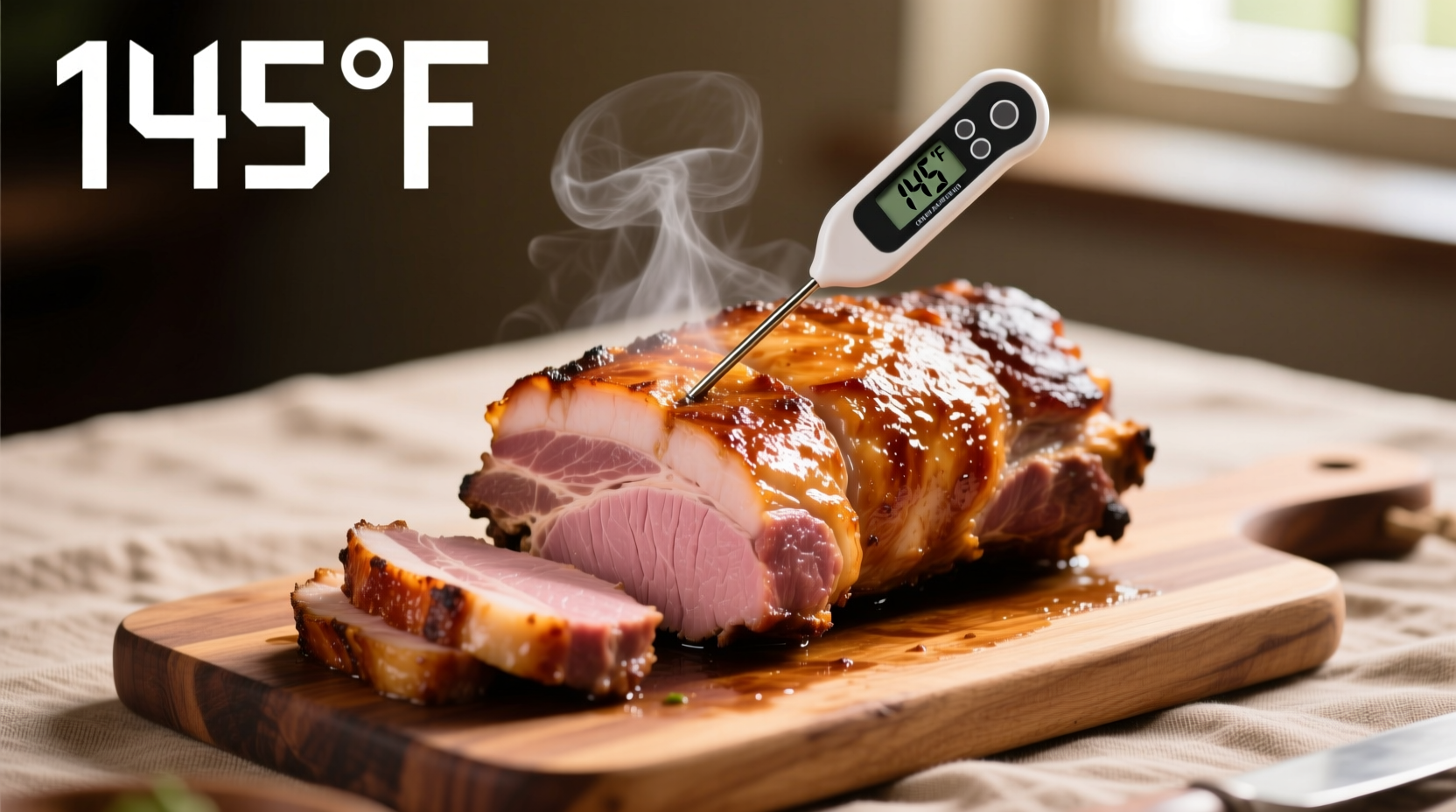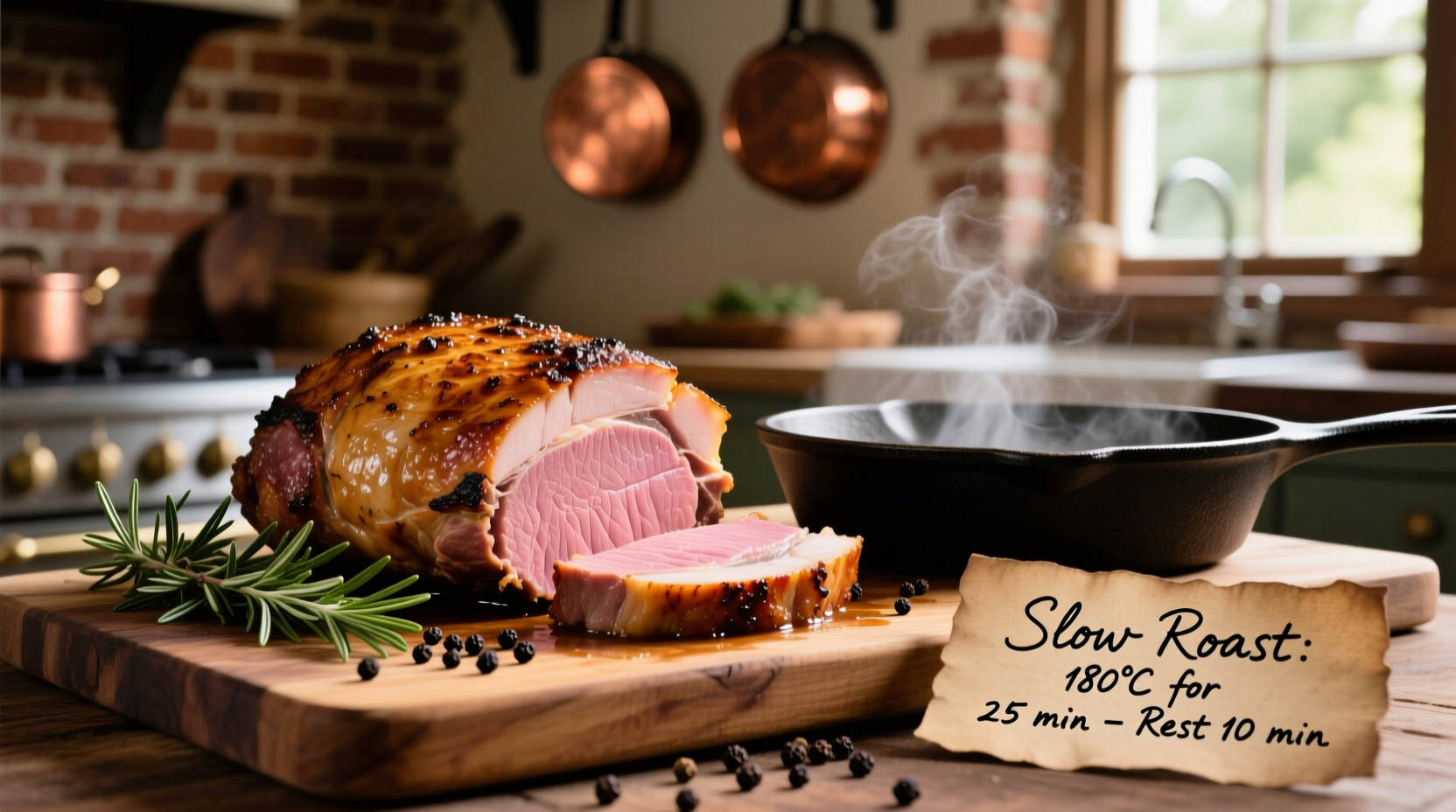Many home cooks struggle with pork loin, ending up with either dry, overcooked meat or unsafe undercooked results. The confusion stems from outdated cooking guidelines and inconsistent advice online. Understanding the science behind pork cooking times transforms this challenging cut into a reliable weeknight dinner.
Why Proper Pork Loin Timing Matters
Pork loin's lean composition makes it particularly vulnerable to overcooking. Unlike fattier cuts, it lacks marbling to keep it moist when exposed to heat for too long. The USDA's updated guidelines reflect scientific advances in food safety, confirming that 145°F with a rest period eliminates pathogens while preserving juiciness.
Planning Your Pork Loin Cooking Process
Successful pork cooking begins long before it hits the oven. Consider these planning essentials:
- Understand your cut - Pork loin (from the back) differs from pork tenderloin (smaller, more tender)
- Calculate total time - Include 30 minutes for room temperature adjustment plus cooking and resting
- Choose your method - Oven roasting delivers most consistent results for beginners
| Cooking Method | Temperature | Time Per Pound | Best For |
|---|---|---|---|
| Oven Roasting | 350°F (175°C) | 20-25 minutes | Most consistent results |
| High-Heat Roasting | 425°F (220°C) | 15-20 minutes | Crisp exterior, faster cooking |
| Slow Roasting | 275°F (135°C) | 30-35 minutes | Maximum tenderness |
Preparation Essentials for Perfect Results
Proper preparation prevents common cooking disasters:
Remove pork from refrigeration 30-60 minutes before cooking. This critical step ensures even cooking throughout the cut. Season generously with salt at least 45 minutes prior to cooking, allowing the salt to penetrate the meat rather than just seasoning the surface.
Preheat your oven to the precise temperature you'll maintain during cooking. Oven temperature fluctuations significantly impact cooking time accuracy. Professional chefs use standalone oven thermometers to verify actual temperatures, as built-in thermostats often vary by 25°F or more.

Mastering the Cooking Process
Place pork loin on a rack in a roasting pan to allow heat circulation. Insert an oven-safe meat thermometer into the thickest part, avoiding bone or fat pockets. For most home ovens, position the rack in the center to prevent uneven browning.
During cooking, resist the urge to open the oven frequently. Each opening can drop the temperature by 25-50°F, extending cooking time unpredictably. Instead, rely on your thermometer and visual cues through the oven window.
Accurate Doneness Testing
The single most reliable method for determining pork doneness is an instant-read thermometer. USDA Food Safety and Inspection Service confirms that pork is safe at 145°F (63°C) with a 3-minute rest period, which allows residual heat to continue cooking the meat while juices redistribute.
Visual indicators complement thermometer readings:
- Juices run clear, not pink
- Meat feels firm but yields slightly when pressed
- Internal color ranges from pale pink to white
Resting and Serving Techniques
Resting is non-negotiable for juicy pork loin. During the 5-10 minute rest period, internal temperature rises 5-10°F (carryover cooking), and juices redistribute throughout the meat. Cutting too soon releases these precious juices onto your cutting board.
Slice against the grain at a 45-degree angle for maximum tenderness. Professional chefs recommend ¼ to ½ inch thick slices for optimal texture. Serve immediately to enjoy the perfect balance of crispy exterior and moist interior.
Troubleshooting Common Issues
Dry pork: Usually caused by overcooking or skipping the rest period. Next time, remove pork at 140°F to account for carryover cooking.
Undercooked center: If you discover undercooked pork after resting, return it to a 350°F oven just until it reaches 145°F. Avoid slicing and recooking, which dries the meat.
Inconsistent cooking: Result of uneven thickness. Ask your butcher to tie the roast or use the butterfly technique to create uniform thickness.











 浙公网安备
33010002000092号
浙公网安备
33010002000092号 浙B2-20120091-4
浙B2-20120091-4